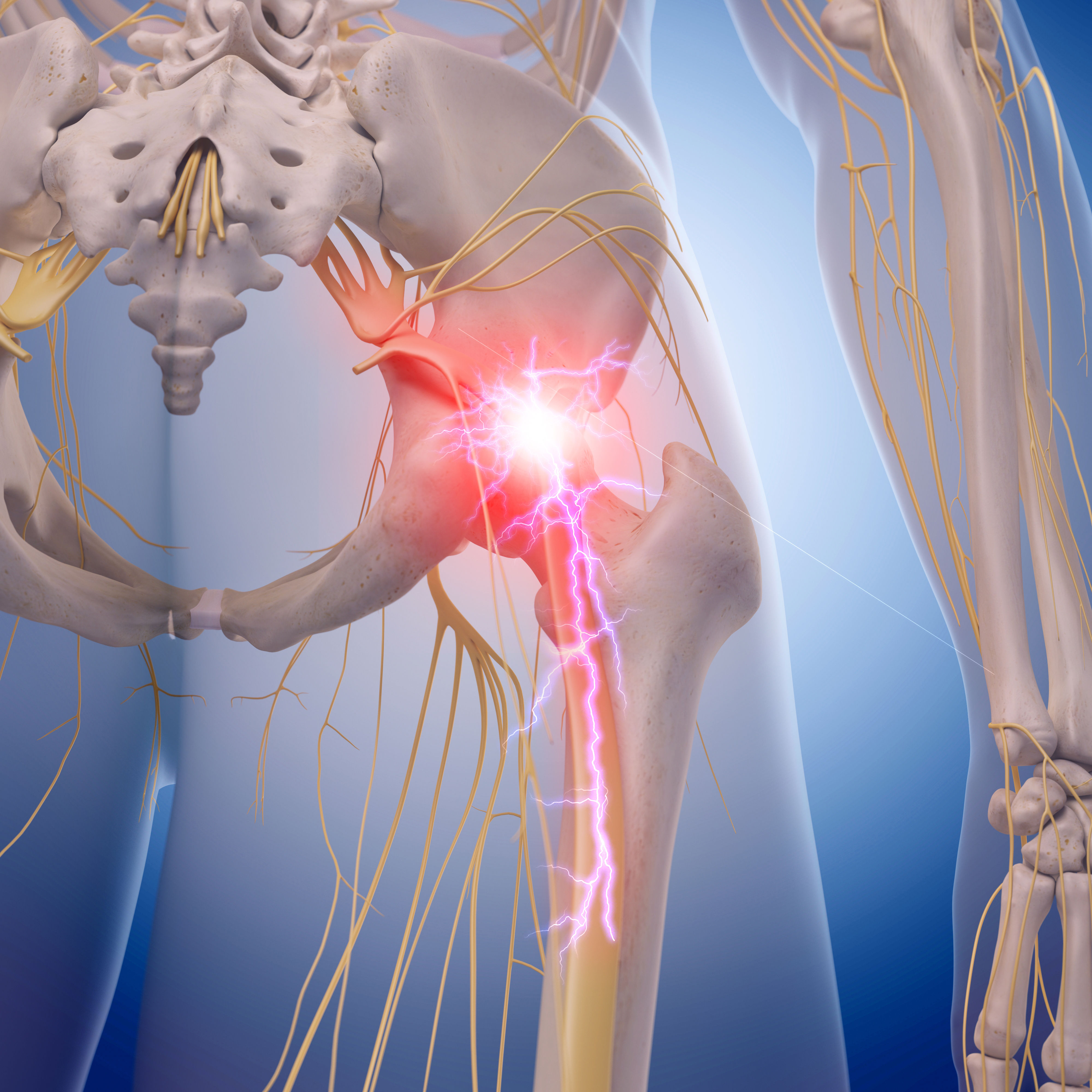
For New Haven Residents, there are treatment options for Sciatica that are safe & effective
Chiropractic care is an excellent option for sciatica and Dr Steve has treated hundreds of patients in New Haven with sciatica with success. The care is safe, effective and treats the cause of the problem. The most common symptoms of sciatica consists of leg pain, which might feel like a bad leg cramp, or it can be excruciating, shooting burning pain that makes standing or sitting nearly impossible. The pain might be worse when you sit, sneeze, or cough. Sciatica can occur suddenly or it can develop gradually. You might also feel weakness, numbness, or a burning tingling ("pins and needles") sensation down your leg, possibly even in your toes. Less common symptoms might include the inability to bend your knee or move your foot and toes.
What causes sciatica?
Sciatica might be a symptom of a "pinched nerve" affecting one or more of the lower spinal nerves. The nerve might be pinched inside or outside of spinal canal as it passes into the leg.
Conditions that cause sciatica
- A herniated or slipped disc that causes pressure on a nerve root — This is the most common cause of sciatica.
- Piriformis syndrome — This develops when the piriformis muscle, a small muscle that lies deep in the buttocks, becomes tight or spasms, which can put pressure on and irritate the sciatic nerve.
- Spinal stenosis — This is a from narrowing of the spinal canal with pressure on the nerves.
- Spondylolisthesis — This is a slippage of one vertebra so that it is out of line with the one above it, narrowing the opening through which the nerve exits
How is sciatica diagnosed?
Dr Steve will perform a complete medical history, including a review of symptoms, and a physical exam can help the health care provider diagnose sciatica and determine its cause. For example, he or she might perform a straight-leg-raise test, in which you lie on your back with your legs straight. The health care provider will slowly raise each leg and note the elevation at which your pain begins. This test can help pinpoint the affected nerves and determine if there is a problem with one of your discs.
Other diagnostic tests might be performed to look for other causes of sciatic pain or how serious the condition is. Such testing might include:
- X-ray to look for fractures in the spine
- Magnetic resonance imaging (MRI) or computed tomography (CT) scan to create images of the structures of the back
- Nerve conduction velocity studies, evoked potential testing, or electromyography to examine how well electrical impulses travel through the sciatic nerve
- Myelogram using dye injected between the vertebrae to determine if a vertebra or disc is causing the pain. However, most patients with sciatica can be treated without the need for further diagnostic testing.
How is sciatica treated?
The most common and successful treatment of sciatica is a gentle technique called Flexion & Distraction with Long Axis Decompression. The procedure is quite comfortable and safe. It performed while you lie on a special table and stretches you out while the doctor gently works on the lumbar pine with his hands. The action of the procedure takes the pressure off of the inflamed nerve and provides almost instantaneous relief.
Parking in front or in the rear, staffing they are great friendly and helpful, clean inside And Dr Steve is awesome, I would recommend all that have sports injuries or that need a physical for your job, or DMV
Diana Williams-Johnson
Wonderful and friendly staff. I felt that Dr. Steve truly cares about his patients and their recovery. He has been a tremendous help to me with several physical issues due to injury.
LT in New Haven
Amazed at the professionalism, knowledge, and courtesy from moment of stepping in, right through to discharge from Doctor!! They make you feel acknowledged and appreciated no matter the reason you are there or the type of patient/client. Even though this was first and only time there thus far I would recommend them and definitely will be going back for next check up. Thank you and keep up the good work!????????
Jay Ggarbero
I want to recommend this office for DOT physicals. I was referred by my office and it was great. The office staff was really nice, there was free parking. It was crowded and I was in and out in 35 minutes. Dr Steve was awesome. GO there!
Brian Mazanowski
Go there !! I went there for a DOT physical and everything was so smooth. In and out in 30m. nice people, fair price, and the doctor was very nice guy!!
Joao Victor
Good Customer service went in and out for DOT Superfast In and out
Edwin Ortiz
O M G!!! What an amazing place! Felt welcomed by staff. Dr Piserchia is a gentle giant. HIGHLY RECOMMENDED!!
Monique Jackson Caesar